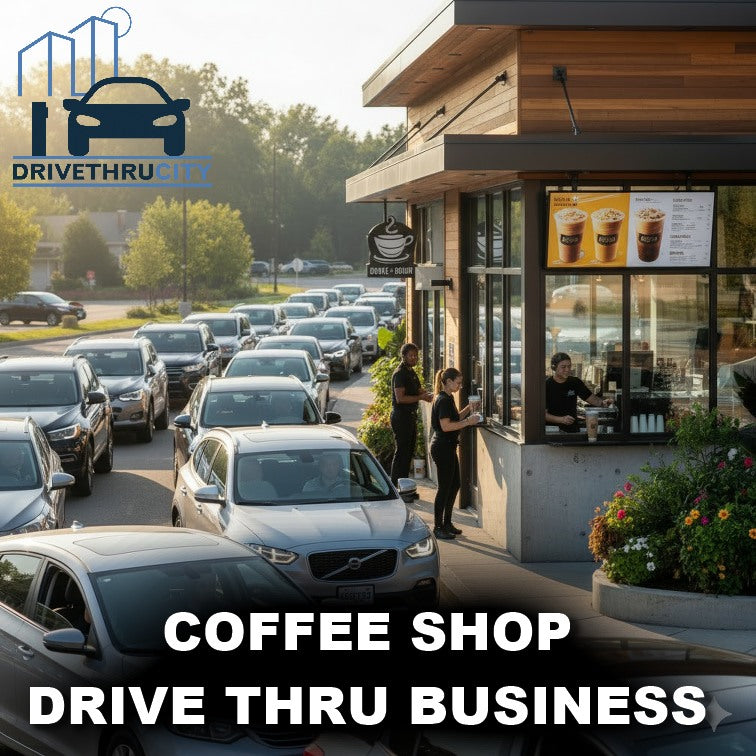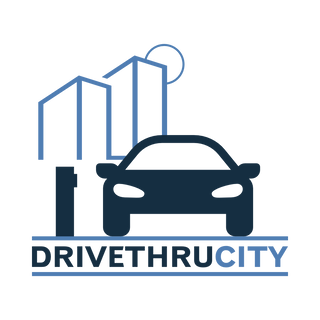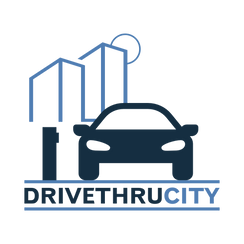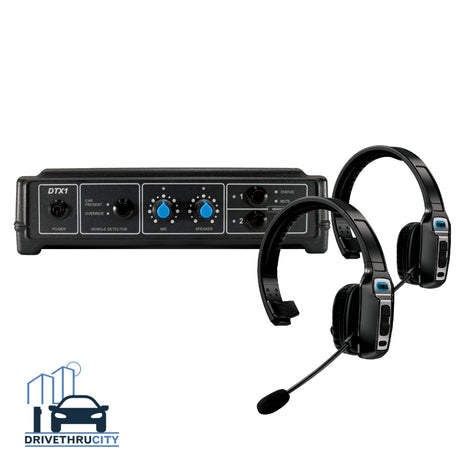The Drive-Thru Imperative: Why the Car is the Future of Coffee Commerce
Posted by XMOD LLC

- In the US, drive-thru locations now account for 59% of coffee purchases, a notable increase compared to 55% last year
- 7 Brew's sales increased by 163% in 2024, while Dutch Bros' stock rose by 64%
- Almost three-quarters of all U.S. restaurant traffic now happens off-premises, with cars serving as both cafés and sanctuaries for an increasingly solitary customer base.
In the United States, coffee culture is increasingly shifting from cafes to cars. Drive-thru coffee chains like Dutch Bros, 7 Brew, Biggby Coffee, Scooter’s Coffee, and Black Rock Coffee Bar are rapidly expanding nationwide, comparable in growth to fast-food franchises.
A record 59% of coffee purchases occur at drive-thrus, as per the National Coffee Association, increased from 55% a year ago. The trend is bolstered by pandemic effects, post-pandemic inflation, and a societal move towards mobility and efficiency.
Drive-thru coffee chains are undergoing significant expansion, driven by a highly efficient, vehicle-focused business model. For example, Dutch Bros has grown from a single pushcart in 1992 to over 1,000 outlets, adding 31 new shops in Q2 2025 alone. Similarly, 7 Brew has more than doubled its presence to approximately 460 locations since a 2024 Blackstone investment and is poised for further growth with plans to add over 200 more stores. This strategy is defined by speed, with Black Rock Coffee aiming for a 90-second order time, and is supported by minimalist architecture featuring tiny, seating-free stores as small as 350 square feet.
The drive-thru model offers superior unit economics that are highly appealing to investors. Its low cost structure—achieved through a small footprint, minimal equipment, and lean staffing—allows for rapid and cost-effective franchising compared to traditional cafés. This efficiency leads directly to powerful growth: 7 Brew, the U.S.'s fastest-growing chain over the last three years, generated over $500 million in system sales, fueled by 163% sales growth and 78% unit growth last year. Construction costs are also significantly lower than those for conventional restaurants. For customers, the core draw is speed (90-second service), competitive pricing, and the ultimate convenience of never leaving their car.
Dr. Partha Sarathi Mishra, an Assistant Professor at the University of Texas at El Paso, suggests that although the exact catalyst is unknown, the existing consumer demand for drive-throughs was drastically accelerated by the pandemic. This is backed by his working paper, which shows a post-pandemic increase in both visits and spending at drive-through locations. Potential causes include the desire for greater convenience, the rise of online deliveries, or the simple need for fast service from inside the vehicle.
Mishra further explains that drive-through stores are an economically superior channel because they achieve higher throughput per square foot. While in-cafe customers occupy space for extended periods, cars complete orders in an average of 5–8 minutes. This higher volume with similar service costs makes the drive-through model more efficient, prompting companies to implement strategic shifts like Taco Bell's Defy concept and the proliferation of drive-through-only coffee stores.
The rise of these high-speed chains is directly pressuring incumbents like Starbucks, forcing a shift away from its foundational "third space" café strategy. While Starbucks executives still promote the value of community, the company is quietly closing hundreds of stores and losing market share to rivals whose models prioritize throughput over togetherness.
Recognizing this shift, Starbucks announced in May 2022 that 90% of all its new locations would include a drive-thru. Similar struggles are evident abroad, with Costa Coffee, the UK's largest chain, also finding it difficult to sustain the traditional café-first model. This divergence highlights a significant cultural change: the 21st-century coffee experience is no longer about lingering with a laptop, but about consuming coffee as quickly and frictionlessly as possible, where speed has become the new luxury.
DRIVETHRUCITY
The Car as a Personal Sanctuary
The success of drive-thru coffee isn't purely economic; it's tied to a societal shift toward solitude and "me time." With Americans spending more time alone—for example, the share of adults dining with friends has dropped over 30% in 20 years—the car has transformed into a private refuge. Surveys show that Millennials use their time behind the wheel for self-improvement (like listening to podcasts), while Gen Z uses it to decompress or even nap. In either scenario, the vehicle serves as a sanctuary, and coffee fits perfectly into this ritual, acting as an ideal companion for a solo commute or a stolen moment of quiet reflection.
The rise of the drive-thru aligns with the wider trend of "dashboard dining," where consumers increasingly eat and drink in their vehicles. Data from Technomic shows that the percentage of people eating limited-service meals in their cars rose across all dayparts between 2022 and 2025. This habit is amplified by social media, where influencers post popular Mukbang ASMR videos of themselves consuming food and oversized iced lattes in their cars, effectively normalizing the vehicle dashboard as a dining table.
Drive-thru coffee chains have successfully capitalized on this culture of solitude by offering a stimulating, yet contained, experience. At a 7 Brew in Connecticut, for example, staff use tablets for car-side ordering while loud music and singing baristas create a high-energy atmosphere inside their compact stand. As one manager noted, "We create an experience." This model delivers fun and fleeting stimulation that customers can enjoy without ever leaving the privacy of their car. Essentially, it provides the illusion of connection without the burden of community—a perfect fit for a society where nearly three-quarters of all restaurant traffic is now consumed off-premises. As Dr. Partha Sarathi Mishra suggests, it's hard to separate convenience from this cultural shift, but "solitude and comfort play a role," making the car a 'new kind of personal café.'"
The battle for the future
The current surge in drive-thru demand has profound implications for the coffee industry, presenting a major challenge for Starbucks. With less than half its U.S. stores featuring a drive-thru, Starbucks is under pressure to adapt to changing consumer behavior. Analysts estimate this behavioral shift is equivalent to losing a quarter of Starbucks' customers and half its revenue to rivals.
Meanwhile, competitors are accelerating at astonishing rates: 7 Brew’s sales surged 163% last year, and Dutch Bros’ stock rose 65%. Starbucks’ stock, by contrast, fell over 9%. This growth is underpinned by a hard-to-beat economic model: drive-thru chains require less space and fewer employees, making them attractive to private equity looking for rapid franchising. The confidence in the model was underscored by Black Rock Coffee Bar successfully going public, raising $294.1 million and achieving a $1.32 billion market value—the first restaurant brand to do so in two years.
Here are a few ways to rephrase the text, focusing on the trade-off between convenience and the cultural value of coffee:
Drive-thrus appeal directly to the post-pandemic consumer, offering a perfect blend of low-contact service and mobile app integration. Ordering digitally and receiving a custom latte in 90 seconds satisfies both the modern demand for convenience and the traditional desire for ritual.
However, this model raises sustainability concerns. Chains focused purely on speed risk reducing their product to a sugar-laden fuel, potentially eroding coffee’s cultural capital. Critics worry about a "dilution effect": if younger consumers become accustomed to heavily syruped, giant iced lattes, they may lose their taste for coffee itself. While Starbucks' emphasis on "connection" and a crafted experience might seem out of step with current trends, this strategy serves to preserve coffee's status as more than just a commodity or a quick hit of caffeine.
The drive-thru model excels at meeting modern demands for speed and low-contact service, perfectly integrating mobile ordering and digital payment to deliver customized lattes within 90 seconds.
Despite this efficiency, the focus on rapid service poses a significant risk: the tendency to simplify the drink into sugar-laden fuel could severely dilute coffee’s cultural capital. There is a concern that consumers, especially younger ones, who are habituated to heavily sweetened, giant iced lattes, may lose appreciation for the intrinsic taste of coffee. Starbucks’ strategy of championing "connection" and the crafted experience, though seemingly outdated, may be crucial for preventing coffee from becoming just another convenience commodity.
The rivalry between the car and the café is a metaphor for a central tension in American life: solitude versus community. Factors like commuting, inflation, and suburban sprawl have cemented the drive-thru as the primary coffee channel in the U.S. This preference is now beginning to spread, even to Europe; in the UK, where café culture is deeply entrenched, Pret A Manger is launching its first drive-thru.
Despite the current drive-thru dominance in the U.S., Dr. Mishra anticipates that the two models will ultimately coexist. He links consumer choice to work patterns: office commuters lean toward the speed of the drive-thru, while remote workers seek the café as a change of scenery. He concludes that there will be no single winner, but rather specialized chains serving each channel. Although drive-thru is now the dominant force in the American coffee economy, its global future hinges on whether the world adopts the American inclination to conduct life—and consumption—on the go.
The Drive-Thru Imperative: Why the Car is the Future of Coffee Commerce
The data unequivocally shows that the drive-thru is no longer just an optional convenience for coffee retailers; it is the dominant economic and cultural engine for business growth in the modern American market. Its importance stems from its powerful ability to perfectly align operational efficiency, investor demand, and evolving consumer behavior, creating a model that is inherently superior to the traditional café in terms of throughput and profitability.
Superior Unit Economics and Rapid Expansion
For any business focused on growth, the drive-thru model offers an irresistible financial advantage. The design—based on a small physical footprint, minimal equipment, and lean staffing—translates directly to dramatically lower overhead and construction costs compared to conventional restaurants. This efficiency allows chains to franchise and expand at an astonishing pace, attracting major private equity investment eager to capitalize on the rapid scaling. As seen with leading chains, this efficiency delivers robust financial results, fueling growth that has left café-centric incumbents like Starbucks struggling to keep pace and ceding market share. The drive-thru is simply built to achieve higher throughput per square foot, transforming a long-dwell retail space into a high-volume transaction point.
Catering to the New Consumer Culture
Beyond economics, the drive-thru validates and capitalizes on powerful cultural shifts amplified by the pandemic. It appeals to a post-pandemic preference for low-contact service and seamless mobile app integration. Crucially, it services the rising demand for "me time" and the trend of "dashboard dining."
The consumer’s car has evolved from a mode of transportation into a private, controlled sanctuary. The drive-thru experience—often loud, fun, and fast—provides a welcome dose of "stimulation without the burden of community." Customers get their customized latte in 90 seconds, fitting the drink perfectly into a solitary commute or a quick moment of decompression. Speed has become the new luxury, and the drive-thru is the ultimate expression of this friction-free convenience.
The Strategic Imperative
For incumbent brands, adapting is non-negotiable. The behavioral shift toward drive-thrus is so significant that, for large chains, it represents the potential migration of a massive percentage of revenue to this single format. While the traditional café culture, or "third space," may not disappear entirely—especially for remote workers seeking an alternative workspace—its role is shrinking.
The rivalry is not merely about service style; it reflects a fundamental tension in American life between slowness and speed, community and solitude. The drive-thru is the unequivocal winner in this tension, having become the dominant model in the U.S. coffee economy.
To improve and grow business today, a coffee shop must move beyond the ideal of the lingering laptop user and embrace the reality of the consumer in the driver's seat. Drive-thru capability is no longer an asset; it is a foundational prerequisite for market dominance and sustained growth.
The coffee shop industry in the United States is currently undergoing a massive transformation, with growth being aggressively channeled through drive-thru formats rather than the traditional in-store café model. The overall market is healthy, but the future belongs to speed and convenience.
US Coffee Market Growth and Projections
The overall U.S. coffee market, which includes coffee shops, retail packaged coffee, and ready-to-drink beverages, is a robust and growing sector.
Key Growth Drivers:
- High Consumption: of Americans consume coffee daily, surpassing tap water intake.
- Premiumization: Growing demand for specialty, gourmet, and ethically sourced coffee drives up the overall market value.
- Convenience: The evolving, busier lifestyle of consumers has driven a strong preference for on-the-go consumption.
The Drive-Thru Dominance: The Future of Coffee Retail
The most significant shift in the coffee industry is the migration of sales from in-store dining to off-premises consumption, specifically the drive-thru.
Current Market Shift
- Drive-Thru Market Share: A record of all U.S. coffee purchases now happen at the drive-thru, up from just one year prior.
- Off-Premises Consumption: Nearly three-quarters ( of all U.S. restaurant traffic is now off-premises, perfectly aligning with the drive-thru model.
- Customer Traffic: Drive-thru is consistently the leading service segment in the coffee shops market.
Explosive Growth of Drive-Thru Chains
The companies built around the drive-thru model are growing at a faster rate than traditional giants:
Incumbent Adaptation
Traditional industry leader Starbucks is under pressure to adapt its "third place" café model:
- Store Count: Less than half of Starbucks' U.S. locations currently feature a drive-thru.
- Strategic Shift: Starbucks announced in May 2022 that of all its new locations would feature a drive-thru, acknowledging the irreversible market trend.
- Revenue at Risk: Some analysts estimate that the shift to drive-thrus is equivalent to half of Starbucks' revenue migrating to this high-throughput format.
Future Projections
Experts and market data point to the coexistence of both models, but with a clear trend toward off-premises specialization:
- Drive-Thru Efficiency: The model is structurally superior because cars spend an average of 5–8 minutes per order versus much longer in-cafe durations, generating higher sales volume with lower staffing and space requirements.
- Specialization: Chains will increasingly specialize: drive-thrus for commuters and on-the-go consumers, and traditional cafés for remote workers seeking a change of workspace.
- Digital Integration: The market will favor businesses that seamlessly integrate mobile ordering and digital payment with their low-contact, drive-thru service, satisfying the consumer's craving for both convenience and ritual.
In summary, the battle for the future is being fought in the drive-thru lane. While overall coffee consumption remains strong, future business growth and investment will overwhelmingly favor the efficient, high-throughput model built for the consumer in their car.
3m drive thru system
3m intercom systems
3m xt-1 headset
coffee drive thru kiosk for sale
coffee truck business plan
drive through business ideas
drive thru business
drive thru business ideas
drive thru communication system
drive thru headset system
drive thru headset systems for restaurants
drive thru ideas business
drive thru intercom
drive thru sensor
drive thru speaker post
drive thru speaker post for sale
drive thru system for sale
drive-thru communication equipment
drive-thru intercom
drive-thru repair
drive-thru speaker and microphone
drive-thru system repair near me
fasttrackce
hme 6200
hme drive thru headset
hme drive thru headsets
hme intercom
hmebase
how much does it cost to start a coffee truck
huafone
intercom drive thru
pro backorders smartpost
restaurant drive thru equipment
restaurant drive thru intercom system
restaurant drive thru speaker systems
restaurant headset systems



